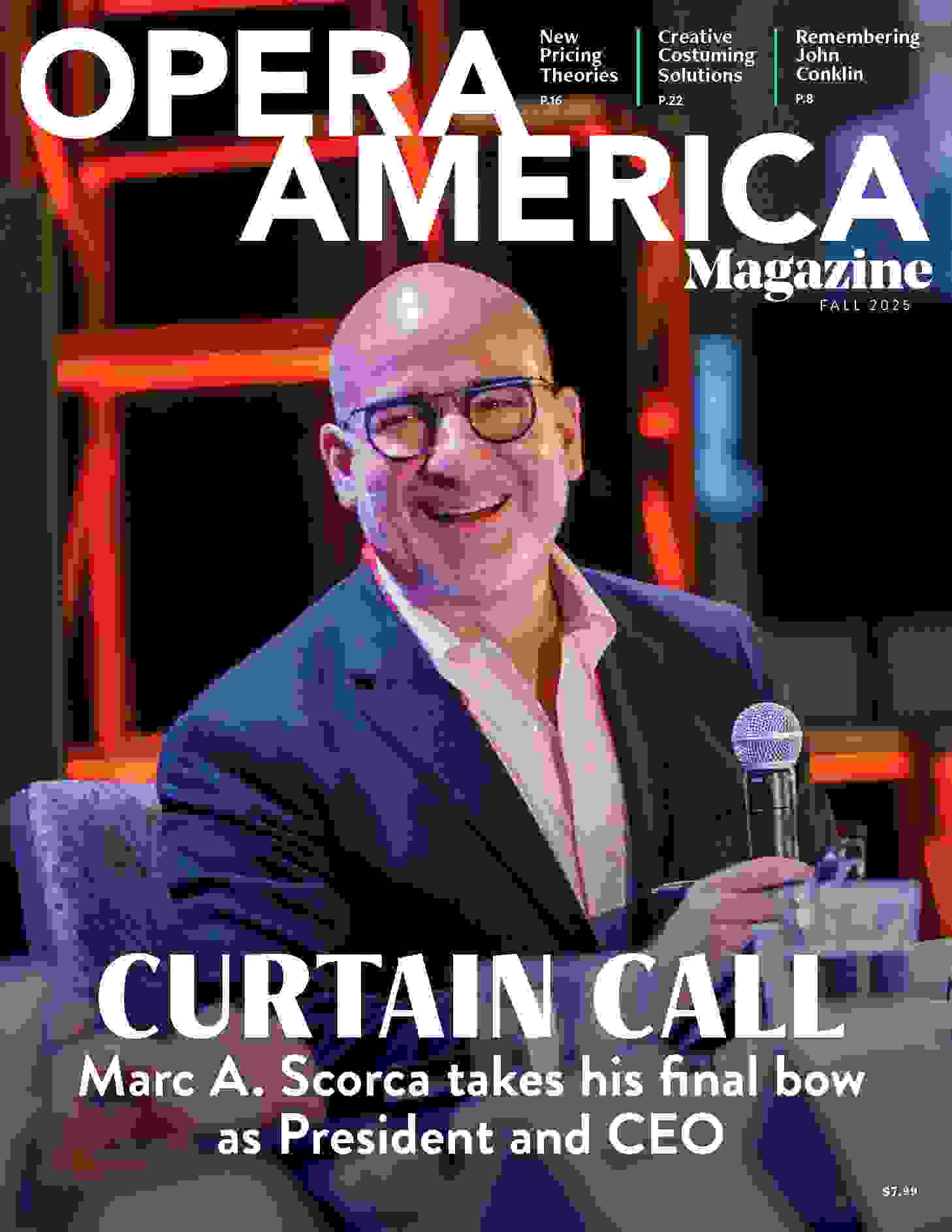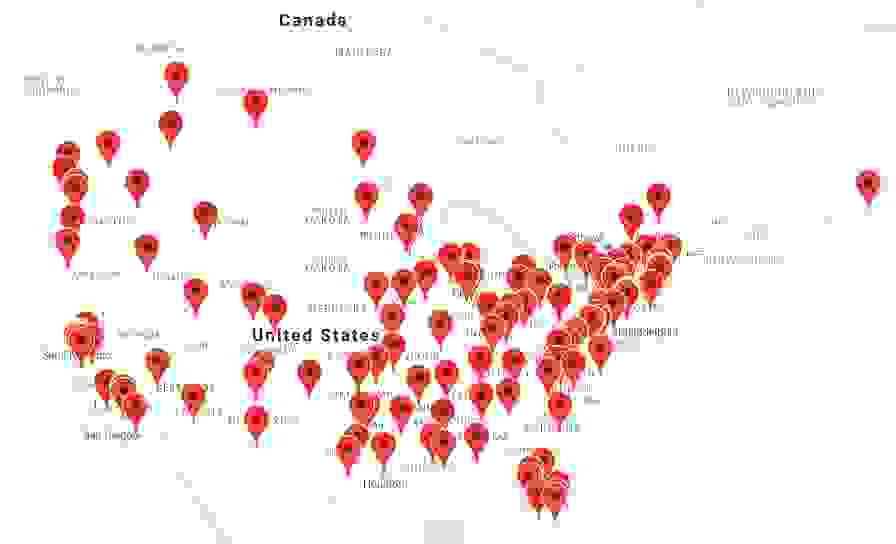Latest Updates & Issues
A persuasive advocate should be up to date on the key issues affecting the opera sector.
Read the latest news on advocacy efforts prepared by OPERA America's senior manager of government affairs and civic practice — and check back for regular updates.
Review the key issues affecting opera and the arts with downloadable briefs prepared by the Cultural Action Group.
Advocacy Updates
Issued December 19, 2025
National Endowment for the Arts Awards 50 Grants for Celebrating America 250: Arts Projects Honoring the National Garden of American Heroes
Earlier this week, the NEA announced it has awarded 50 grants for arts projects taking place across the country in celebration of the national heroes listed in Executive Order 13978, “Building the National Garden of American Heroes”. Each of the grant recipients will receive $25,000 for their projects, which will take place throughout 2026. The 50 NEA-supported Celebrating America250: Arts Projects Honoring the National Garden of American Heroes will honor these individuals highlighted through a variety of artistic disciplines. See the full list of grants.
Mary Anne Carter Confirmed as Chairman of the National Endowment for the Arts
Yesterday, the Senate voted to confirm Mary Anne Carter as chairman of the National Endowment for the Arts (NEA) serving a 4-year term. Carter will lead the agency for a second time, and is "committed to advancing the vision that the arts belong to all Americans, no matter who they are or where they live. The arts are essential to creating, innovating, healing, and recovery, and they provide vital economic stability to communities across the nation. I look forward to the many celebrations that will take place in 2026 in honor of America’s 250th anniversary, as well as to the agency’s continued research into the powerful role the arts play in healing—from illness to trauma to natural disasters.” More can be found at the NEA’s press release.
Federal Judge Orders Reversal of Hundreds of Layoffs Finalized During Shutdown
Judge Susan Illston of the U.S. District Court for the Northern District of California, issued a preliminary junction, signed Wednesday, which orders the departments of Education and State, as well as the Small Business Administration and the General Services Administration, to rescind reduction in force notices for employees who were terminated between Oct. 1 and Nov. 12 — the start and end dates of the recent federal government shutdown. Illston is giving agencies until Dec. 23 to carry out the terms of her preliminary injunction. The continuing resolution passed by Congress on Nov. 12 states that between Nov. 12, 2025 and Jan. 30, 2026, “no federal funds may be used to initiate, carry out, implement, or otherwise notice a reduction in force to reduce the number of employees within any department.” It also states that “any reduction in force proposed, noticed, initiated, executed, implemented, or otherwise taken by an executive agency between October 1, 2025, and the date of enactment, shall have no force or effect.” The judge’s order will impact about 680 total federal employees. That includes nearly 250 Foreign Service officers at the State Department, 200 employees at GSA, 150 at the Education Department’s Office for Civil Rights, and nearly 80 at SBA.
Update courtesy of Federal News Network
Issued December 12, 2025
National Endowment for the Arts FY2027 GAP Grant Deadlines and Guidelines Announced
Earlier this week, the NEA released updated deadlines and guidelines for FY2027 GAP grant applications. There have been many changes, but a few of note include:
-
Some disciplines have been combined for the purpose of application intake to streamline their processes.
-
Theater & Musical Theater are combined.
-
Visual Arts and Film & Media Arts are now Visual & Media Arts.
-
Design & Our Town are combined, and applications will be accepted at both GAP deadlines for added flexibility.
-
Artist Communities is no longer offered as a separate discipline. Artist residency projects and projects from artist community organizations can apply throughout GAP.
-
Challenge America is now offered as a distinct discipline within GAP, and organizations may apply to either GAP deadline.
-
There have been numerous changes and additions to the application questions. Returning applicants should be sure to read the new application instructions.
More can be found at the new NEA FAQ page. Please also note that the updated Assurance of Compliance page and updated priorities.
FY2026 Appropriations Process Update
Under the Continuing Resolution that ended the federal government shutdown in November, Congress has until January 30, 2026, to finalize FY2026 funding for the nine remaining appropriations bills, including funding for cultural agencies and arts education. Given the compressed timeline and the holiday recess, it is essential for advocates to maintain their efforts in urging Congress to support federal funding. Take action now and make sure to personalize the letters with your own stories of impact!
Key Advocacy Issues
Prepare to take action by reviewing the key issues with downloadable briefs prepared by the Cultural Action Group.
National Endowment for the Arts (NEA)
National Endowment for the Arts Fiscal Year 2026 Issue Brief
This Issue Brief was prepared by the Cultural Advocacy Group, a collaboration of arts and culture stakeholders working collectively to advance federal policy.
Arts Education
This Issue Brief was prepared by the Cultural Advocacy Group, a collaboration of arts and culture stakeholders working collectively to advance federal policy.
Visa Processing
The League of American Orchestra's website Artists from Abroad, provides essential tips, templates, and updates for seeking the O and P visas required for artists.
This Issue Brief was prepared by the Cultural Advocacy Group, a collaboration of arts and culture stakeholders working collectively to advance federal policy.
Arts & Health
Please check back for updated issue briefs.





